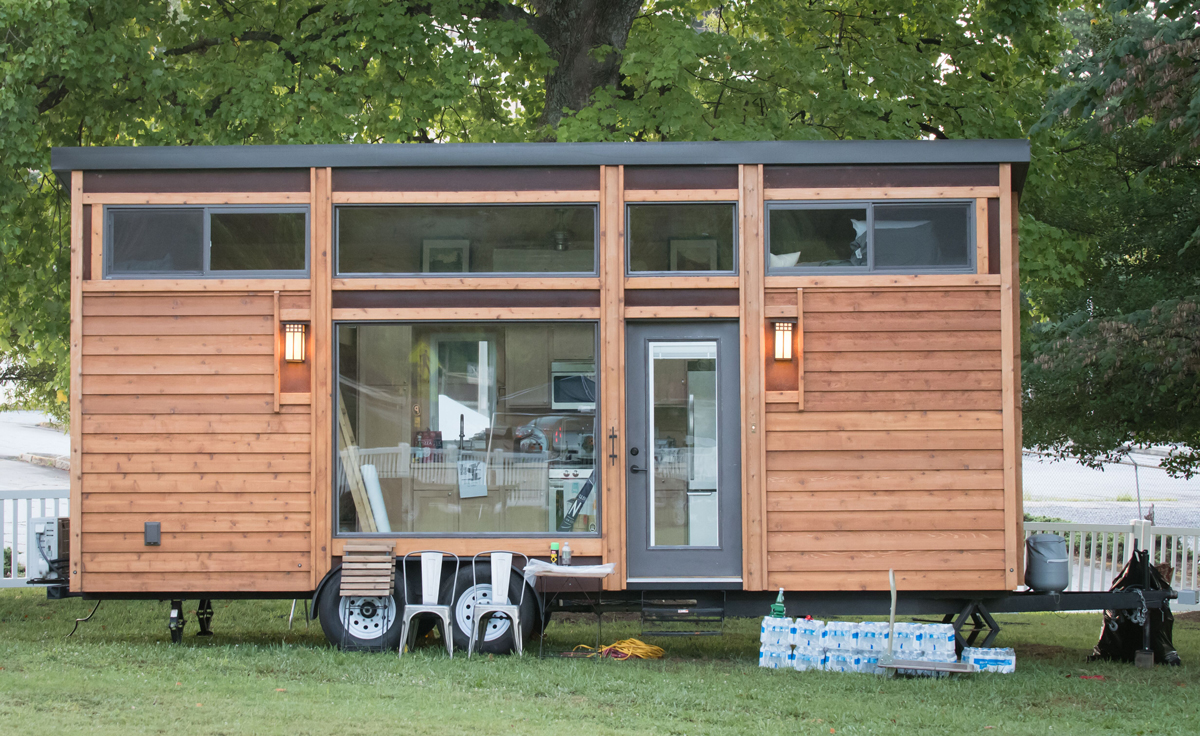
Photograph by J&D Images/Courtesy of Will Johnston
John Venneman can already envision the tiny house in his backyard in Reynoldstown. It would have two small bedrooms, two tiny bathrooms, an open kitchen and living room, and a porch. It would be a comfortable place for his parents or in-laws when they visit, or the occasional Airbnb guest.
“The tiny house idea intrigues us,” he says. “You get the additional room but you still have [your own] personal space.”
People with tiny house dreams can now make them a reality thanks to the May 1 City Council approval of “accessory dwelling units”—tiny houses in the backyards of existing homes. “We’re unlocking additional potential for diversity, affordability, and flexibility in our housing options,” says Kwanza Hall, the city councilman who sponsored the measure.
The door to tiny houses opened just a crack, though. By limiting the zoning change to R5 lots, which already allow for duplexes, proponents avoided the controversy that would ensue in some single-family neighborhoods. Areas with a concentration of R5 include Grant Park, Inman Park, Old Fourth Ward, Edgewood, and Candler Park.
Think of this as an anti-McMansion ordinance. The maximum square footage remains the same for an R5 lot, but it can be broken up into a main house and a secondary house that is no larger than 750 square feet. Previously, carriage houses or guest houses could not contain a kitchen; they couldn’t be used as a permanent residence. The zoning change also eliminates a requirement for off-street parking.
“This is really about options,” says architect Eric Kronberg, who has already designed prototypes and plans to create a design-build company to construct the units. “The size of your pie, which is how much you can build, is fixed. All we’re talking about is how you can slice up the pie. You’re just able to cut it into more slices.”

Rendering courtesy of Kronberg Wall

Rendering courtesy of Kronberg Wall
Tiny houses are generally defined as dwellings that are 400 square feet or less. Clusters of very small houses are in the works at Eco Cottages at East Point (500 to 1008 square feet) and a Decatur cottage court development (498 to 1100 square feet).
The Atlanta ordinance is essentially a test of concept for individual tiny houses in Atlanta, says Kronberg. He expects the demand to be strong. “I really believe that the prospect of providing five to 10 accessory dwelling units a month is an achievable goal, in terms of the need and demand,” he says. “We see this as a great way forward for housing alternatives for our city.”
Tiny House Atlanta already boasts that it is one of the largest tiny house meetup groups in the nation. About 5,000 people came to the Decatur Tiny House Festival it hosted last year, and the festival returns this fall, from September 29 to October 1.
The zoning change provides the first step toward innovative, affordable housing, says Will Johnston, executive director of Tiny House Atlanta. “There’s more to this than just building an accessory dwelling unit in someone’s backyard,” he says. “This is starting to open up the possibilities of what people can do to [expand] housing options.”
Atlanta has taken the first steps towards a rewrite of its zoning code. Hall envisions more changes that allow affordable micro-units, such as tiny house communities, quadraplexes, or special zoning for tiny houses on wheels.
“The sky’s the limit to what’s possible,” says the councilman. “It’s just up to us as a community to figure out what we want to do, what we envision in the future, and opening up as many possibilities as we can dream up.”













